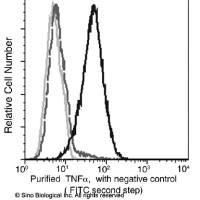Deriving and Propagating Mouse Embryonic Stem Cell Lines for Studying Genomic Imprinting
互联网
互联网
相关产品推荐

Recombinant-Cat-Kit-ligandKITLGKit ligand Alternative name(s): Mast cell growth factor; MGF Stem cell factor; SCF c-Kit ligand Cleaved into the following chain: 1. Soluble KIT ligand; 2. sKITLG
¥10990

TNF-alpha / TNFA / TNFSF2 Antibody, Mouse MAb | TNF-alpha / TNFA / TNFSF2 鼠单抗
¥800

An12g08930/An12g08930蛋白Recombinant A_s_p_ergillus niger A_s_p_ergillus niger contig An12c0300, genomic contig (An12g08930)重组蛋白/蛋白
¥2328

Human EED / Embryonic Ectoderm Development Insect Cell Lysate (WB positive control)
¥1560

Protein Lines homolog, Lins ELISA KIT/ Mouse Protein Lines homolog, Lins ELISA试剂盒
¥2980
相关问答

